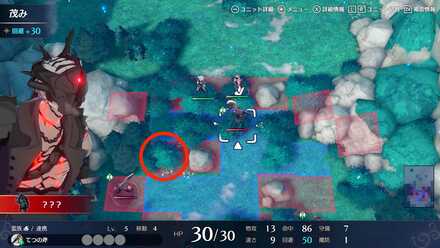Difficulty Level Differences and How to Change
★ Use Zelestia, Gregory, & Madeline in Wave 4 of the DLC!
☆ Unlock the Fell Xenologue by visiting the Ancient Well!
★ All Paired Endings and Mementos from the Pact Ring.
☆ Unit Tier List | Best Classes | Best Pairings | Best Party
★ Farming Guides: Bond Fragments | SP | Gold | Ingots
☆ Increase Supports with Gifts and Recreation.

Fire Emblem Engage has the Normal, Hard, and Maddening difficulties. Learn about the difficulty settings and how to change difficulty in game.
List of Contents
Difficulty Level Differences
| Difficulty List | |
|---|---|
| Normal | For new and intermediate players. |
| Hard | For experienced players. |
| Maddening | For those who seek a true challenge. |
Normal Features

Normal difficulty allows you to experience the story without the hindrance of overly challenging or complex gameplay features. If you are new to the Fire Emblem series or want to progress through the story smoothly, Normal difficulty is recommended.
Hard Features
Hard difficulty puts an emphasis on tougher combat than Normal difficulty. The number of enemies increases, their stats also increases, and the use of their abilities becomes more complex. This level of difficulty is for those who are already familiar with the Fire Emblem series and those who are looking for a more exciting and challenging playthrough.
Increased number of enemies
| Differences Between Normal and Hard Difficulty | |
|---|---|
 Empty tile |
 New enemy! |
On Hard difficulty, more enemies spawn in each battle than in Normal difficulty. In Chapter 1, the number of Corrupted that spawn on Hard difficulty is 4, while it's only 3 on Normal difficulty.
Increased enemy stats
| Differences Between Normal and Hard Difficulty | |
|---|---|
 |
 |
Aside from quantity, enemies also get a stat buff when going from Normal to Hard difficulty. In Chapter 1, the physical attack of the Corrupted on Hard difficulty is 13, while it's only 12 on Normal difficulty.
Maddening Features
In the Maddening difficulty, the enemies are also tougher to beat (even moreso than in the Hard difficulty) and it also becomes more difficult to gain experience and level up. As its name suggests, this difficulty is for the advanced players who have already beat the game and want to experience its most tense and nerve-wracking version. As the hardest difficulty, you'll need to be efficient with your unit choices to ensure that you'll be able to progress smoothly (or at all) in Maddening.
Number of enemies increases from Hard
| Differences Between Hard and Maddening Difficulty | |
|---|---|
 Empty tile |
 |
Maddening difficulty adds even more enemies to the battlefield. In Chapter 1, the number of Corrupted that spawn on Maddening difficulty is 5, while it's only 4 on Hard difficulty.
Enemy stats increases from Hard
| Differences Between Hard and Maddening Difficulty | |
|---|---|
 |
 |
Maddening difficulty features enemies with the strongest stats yet! In Chapter 2, the physical attack of the Corrupted on Maddening difficulty is 20, while it's only 19 on Hard difficulty.
Some enemies get skills
Additionally, some enemies get skills in Maddening that they did not possess in easier difficulties. In Chapter 2, Lumera gets the Unbreakable skill.
▶︎ Maddening Difficulty Guide: Differences and Tips
Best Difficulty to Choose
Choose Normal Casual for New Players

Normal Casual is the best way to introduce yourself to Fire Emblem Engage. You won't have to think about every unit placement to ensure no units will fall during the enemy turn and there will also be less enemies and reinforcements to make sure your team don't get overwhelmed too much.
Hard Classic for Experienced Players

Classic mode has always been the standard mode for Fire Emblems and permadeath is a non-negotiable part of the game. Newer entries have added classic for people that do not prefer this feature. Hard also makes enemy units stronger and there will also be more units in every stage of the game. If you want the standard Fire Emblem experience, going for a hard classic is the way to go.
Maddening Mode to test Your Fire Emblem Skills

Maddening Mode is truly honest with its name being called maddening as this difficulty mode is truly the hardest mode of the game. You will be recieving less resources while enemies will also appear in greater droves than hard difficulty. Maximizing your unit's specialties, stat leveling and growth, as well as learning the best skills and emblems to use is not just recommended, it is crucial to do.
Difficulty Differences of Modes
Game Modes in Past Games
| Casual Mode | Fallen units return in the next battle. |
|---|---|
| Classic Mode | Fallen units are lost forever. Every decision counts. |
There are two game modes you can choose that determine whether unit permadeath is disabled or not. If a unit dies in battle during a Casual Mode playthrough, then the unit simply retreats for that battle and you can use them in a future battle. If a unit dies in Classic Mode, then they'll be a dead unit that you can never use again.
If the thought of permanently losing units in battle is too stressful for you, there's no shame in taking on Casual Mode and just enjoy each battle one at a time. Otherwise, take on Classic Mode and test your mettle and prowess as a commander of troops.
How to Change Difficulty
Visit Your Bed at The Somniel

In the Somniel home base, head to your room and interact with your bed. There, you'll have the option to change the difficulty settings in the middle of that game's progression.
You can only decrease the Difficulty Level and not increase it. Be very sure before you confirm the decision to lower the difficulty.
▶︎ Missable Items, Characters, and Points of No Return
Fire Emblem Engage Related Guides

▶︎ Beginner's Guide to Fire Emblem Engage
All Tips and Tricks
Author
Difficulty Level Differences and How to Change
Rankings
- We could not find the message board you were looking for.
Gaming News
Popular Games

Genshin Impact Walkthrough & Guides Wiki

Umamusume: Pretty Derby Walkthrough & Guides Wiki

Where Winds Meet Walkthrough & Guides Wiki

Pokemon Legends: Z-A Walkthrough & Guides Wiki

Honkai: Star Rail Walkthrough & Guides Wiki

Wuthering Waves Walkthrough & Guides Wiki

Digimon Story: Time Stranger Walkthrough & Guides Wiki

Clair Obscur: Expedition 33 Walkthrough & Guides Wiki

Pokemon TCG Pocket (PTCGP) Strategies & Guides Wiki

Zenless Zone Zero Walkthrough & Guides Wiki
Recommended Games

Super Smash Bros. Ultimate Walkthrough & Guides Wiki

Diablo 4: Vessel of Hatred Walkthrough & Guides Wiki

Fire Emblem Heroes (FEH) Walkthrough & Guides Wiki

Yu-Gi-Oh! Master Duel Walkthrough & Guides Wiki

Elden Ring Shadow of the Erdtree Walkthrough & Guides Wiki

Monster Hunter World Walkthrough & Guides Wiki

Pokemon Brilliant Diamond and Shining Pearl (BDSP) Walkthrough & Guides Wiki

The Legend of Zelda: Tears of the Kingdom Walkthrough & Guides Wiki

Persona 3 Reload Walkthrough & Guides Wiki

Cyberpunk 2077: Ultimate Edition Walkthrough & Guides Wiki
All rights reserved
©2023 Nintendo / INTELLIGENT SYSTEMS.
The copyrights of videos of games used in our content and other intellectual property rights belong to the provider of the game.
The contents we provide on this site were created personally by members of the Game8 editorial department.
We refuse the right to reuse or repost content taken without our permission such as data or images to other sites.



























